- News
- Reviews
- Bikes
- Components
- Bar tape & grips
- Bottom brackets
- Brake & gear cables
- Brake & STI levers
- Brake pads & spares
- Brakes
- Cassettes & freewheels
- Chains
- Chainsets & chainrings
- Derailleurs - front
- Derailleurs - rear
- Forks
- Gear levers & shifters
- Groupsets
- Handlebars & extensions
- Headsets
- Hubs
- Inner tubes
- Pedals
- Quick releases & skewers
- Saddles
- Seatposts
- Stems
- Wheels
- Tyres
- Tubeless valves
- Accessories
- Accessories - misc
- Computer mounts
- Bags
- Bar ends
- Bike bags & cases
- Bottle cages
- Bottles
- Cameras
- Car racks
- Child seats
- Computers
- Glasses
- GPS units
- Helmets
- Lights - front
- Lights - rear
- Lights - sets
- Locks
- Mirrors
- Mudguards
- Racks
- Pumps & CO2 inflators
- Puncture kits
- Reflectives
- Smart watches
- Stands and racks
- Trailers
- Clothing
- Health, fitness and nutrition
- Tools and workshop
- Miscellaneous
- Buyers Guides
- Features
- Forum
- Recommends
- Podcast
news
Tadej Pogačar’s power numbers are “mind boggling”, says Chris Froome; Cyclist photographs “things destroyed by drivers” on cycleway “not fit for purpose”; Dairy-free diet for Tour de France team; Olympic drama; Brutal Basque climb + more on the live blog
SUMMARY
 Chris Froome and Tadej Pogacar (Simon Wilkinson/SWpix.com, Zac Williams/SWpix.com)
Chris Froome and Tadej Pogacar (Simon Wilkinson/SWpix.com, Zac Williams/SWpix.com)09 August 2024, 08:08
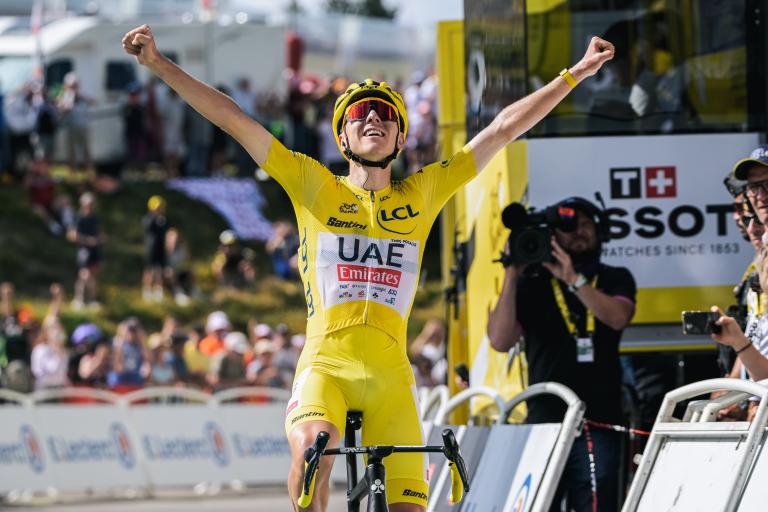
Tadej Pogačar’s power numbers are “mind boggling”, says Chris Froome, as four-time Tour de France winner reckons “any record is vulnerable” with “absolutely incredible” Slovenian around
It’s strange to think that not that long ago, Chris Froome was the benchmark for staggering climbing times in grand tours.
But the times have certainly a-changed, and after Tadej Pogačar’s slew of record-breaking rides at this year’s Tour de France – which included destroying Marco Pantani’s Plateau de Beille time from 1998 by three and a half minutes, along with several other records set during cycling’s wild west EPO era – it’s clear that the goalposts have shifted significantly since Froome’s days as the sport’s dominant grand tour winner.
(ASO/Charly Lopez)
And that’s something even the four-time Tour winner acknowledged himself this week while speaking to Velo’s Shane Stokes at the Arctic Race of Norway, where the 39-year-old finished 89th on GC to continue his run of mid-bunch stage race placings this year.
“It’s incredible, absolutely incredible,” Froome, said of Pogačar’s performance at the Tour this year, where the rampant Slovenian took six stage victories, including every single high mountain stage, and beat Jonas Vingegaard by over six minutes on the way to his third career Tour title.
“If the numbers that are being reported coming out of the Tour de France are to be believed and correct, it is just mind boggling. I mean, an amazing, amazing, amazing performance.”
To put Froome’s comments into context – on Plateau de Beille last month, in what many, including Pogačar himself, rate as one of the greatest climbing performances cycling has ever seen, the UAE Team Emirates rider averaged a staggering power output of 7w/kg for just under 40 minutes on the 15.8km, 7.9 per cent Pyrenean brute.
And that was at the end of a 199km monster stage that featured four other first-category climbs before the HC denouement, and one that was raced hard from the gun.
By contrast, according to Team Sky – and you can take their claims with as much salt as you like – Froome averaged 6.1w/kg when he destroyed his rivals on La Pierre-Saint-Martin at the end of stage 10 of the 2015 Tour, putting 59 seconds into second-placed teammate Richie Porte and over a minute into everyone else, including Nairo Quintana.
(Alex Broadway/ASO/SWpix.com)
That was Froome at his summit finish-killing peak, and it’s important that while, at 15.2km and 7.4 per cent, the Pierre-Saint-Martin is similar to the Plateau de Beille, the Team Sky leader’s exploits came at the end of a stage which featured no other climbs before its mountain-top finale, and came almost an entire week earlier in the race than Pogačar’s Pirata-destroying ride.
Even Lance Armstrong and his old mucker Michele Ferrari used to bang on about the sacred number of 6.7w/kg that would almost certainly guarantee you the yellow jersey in Paris. Now, Pogačar is hitting the 7 mark, and most of the top five are outdoing three decades of seemingly insurmountable climbing performances.
But it’s not just the Slovenian’s sport-redefining performances at the Tour that impress Froome.
“Given what he’s been able to do in one day races and classics earlier on in the season, to still be able to carry that form through to the Giro and the Tour is just phenomenal,” the Israel-Premier Tech rider added. “He’s a phenomenal athlete. It’s been a pleasure to watch.”
(Simon Wilkinson/SWpix.com)
Another notable difference between Froome and Pogačar is the age at which they reached the top of their sport.
The Slovenian won’t turn 26 until the end of the next month, but he’s already amassed 84 professional victories, including three Tours, a Giro, 17 Tour stages, three editions of Il Lombardia, two Liège-Bastogne-Liège wins, two Strade Bianches, a Tour of Flanders, six Giro stages, and a Paris-Nice.
By Froome’s 26th birthday, the British rider had yet to take his first pro win.
And Froome says that shift towards riders dominating at younger and younger ages (just look at double Olympic champion, monument, and grand tour winner Remco Evenepoel too, who’s still only 24) has been the biggest development he’s seen in cycling during his career.
(ASO/Charly Lopez)
“I think the availability of data has really changed the sport in the last decade. Young teenagers most probably have access to how professionals are training. We’re probably getting 13, 14-year-olds training like WorldTour riders,” Froome, whose palmares also includes two Vuelta a España overall wins and a Giro d’Italia, says.
“So by the time they turned professional at the age of 19, 20, 21, they’re ready to even go and win races like the Tour de France.
“It’s meant that across the board the levels is much higher. And altitude is definitely a factor as well. Everyone’s going to altitude now, whereas beforehand, certainly during the Team Sky days that I had, there were only a handful of teams going to altitude. Now it’s everyone’s going.”
(Alex Whitehead/SWpix.com)
But with success coming at such a young age, does Froome reckon Pogačar can maintain his momentum and keep breaking records, including the all-time Tour record of five wins, before he retires?
“Certainly,” Froome concludes. “I don’t think we can put a limit on that, given how he’s riding. I think at any record is vulnerable, given his age, and given how he’s riding right now.”
09 August 2024, 15:59
Lights, camera, racing…
(Ed Sykes/SWpix.com)
Right, as the Berlin rave vibe gets going in the Paris velodrome, I’m away off to watch some sprint and Madison racing on the telly (and maybe even get out on the bike myself).
I’ll catch you all on the other side of the Olympics, and just in time for the Tour de France Femmes. Now that’s a proper summer of sport…
09 August 2024, 15:35
“Cycleway, my arse!” A snapshot of “things destroyed by drivers on Cycleway 1”
Decent cycling infrastructure is one thing. Cycling infrastructure constantly being destroyed by reckless, dangerous drivers is another entirely.
That’s the point being made by the aptly-named Twitter account ‘Cycleway, my arse!’, whose main goal online is highlighting what they regard as the second-rate nature of Transport for London’s Cycleway 1, and who this week posted the following photos “some of the things recently destroyed by drivers on TfL’s dreadful Cycleway 1 route”:
“When will Will Norman admit this route isn’t for purpose?” the account asked. “It’ll always be dominated by drivers.”
And terrible drivers, at that…
09 August 2024, 16:05
Cyclist in “never-ending” pain after suffering life-changing injuries in pothole crash told he has no grounds for compensation as hole was 13mm too shallow
09 August 2024, 15:06

Ditching the white stuff in the race for yellow: EF-Oatly-Cannondale to go dairy-free during Tour de France Femmes
EF-Oatly-Cannondale will be hoping for stage wins courtesy of double Olympic champion Kristen Faulkner and Paris-Roubaix winner (and the peloton’s barbecue and dancing queen) Alison Jackson, but they’ll be doing so on a strictly milk and cheese-free diet.
While ditching the dairy may have something to do with their sponsor Oatly specialising in oat milk and other dairy alternatives, and the Tour de France Femmes being a handy advertising billboard for their products, the team’s nutritionist Anna Carceller says a traditional diet that includes dairy can hinder a rider’s recovery.
“If a rider is lactose intolerant, she can have very severe digestive problems, which disappear when lactose is removed from her diet,” Carceller says.
“During intense racing, some athletes have functional intolerances with complex molecules like lactose, developing negative symptoms that can impact their performance and overall wellness. Both of these are medical conditions that have to be addressed and managed properly. Eliminating dairy from a rider’s diet can often solve these problems.”
Carceller adds that at a gruelling stage race like the Tour, a rider’s ability to recover after the demands of each stage is key, and that cutting out dairy may also have anti-inflammatory benefits that can help riders recover faster, enabling them to meet the demands of tough stage after tough stage.
“A dairy-free diet is compatible with high performance,” the nutritionist says. “Food science has shown us that nutritional diversity can be met in a dairy-free diet, allowing an athlete to have an excellent diet while going dairy-free without problems.”
Team CEO Jonathan Vaughters added: “This is a nutrition strategy we’ve discussed over the years but have never before implemented. With Oatly coming on board as a partner, it finally makes sense to go dairy-free at certain races. In regards to nutrition, as well as flavour, we can give our riders what they need through Oatly products.”
If only Toon Aerts and Shari Bossuyt had adopted this new groundbreaking nutrition strategy, eh?
09 August 2024, 14:30
One of Bristol’s “most dangerous” cycling and walking routes to be improved, following underspend of Active Travel England money
An extremely narrow stretch of pavement shared by pedestrians and cyclists in Bristol, located next to a busy road, is set to be improved after Active Travel England money was relocated following an underspend on other cycling and walking projects in the city.
According to B24/7, £283,000 will be spent on an ‘outline business case’ for improving walking and cycling along Bath Road, from Cattle Market Road, located next to Temple Meads station, to the Three Lamps junction, after an unexpected underspend on Active Travel England funding on other projects.
Walking and cycling schemes at Filwood Quietway, Deanery Road, Old Market Quietway, and Malago Greenway were completed for less than originally thought, while £50,000 of the unspent funding will also contribute towards the city council’s on-street cycle hangar programme.
09 August 2024, 13:49

Jack Carlin to race for bronze in individual sprint after being beaten in semi-final by impressive Harrie Lavreysen
Jack Carlin will hope to add another bronze to his Olympic individual sprint collection this evening, after the Paisley rider was knocked out in the semi-finals, losing two straight matches to the formidable Dutch powerhouse Harrie Lavreysen.
After Lavreysen took a comfortable first race lead, in a semi-final featuring the gold and silver medallists from the team sprint, Carlin hoped to make life difficult for the three-time Olympic champion, sailing up and down the bankings of the track in a bid to unsettle his rival.
(Alex Whitehead/SWpix.com)
It wasn’t to be for Carlin, unfortunately, as reigning champion and pre-Games favourite Lavreysen powered his way past on the home straight to book his place in yet another Olympic final.
However, there is to be no repeat of the all-Dutch sprint final in Tokyo, after Lavreysen’s teammate Jeffrey Hoogland – who beat Hamish Turnbull in the quarters yesterday – was knocked out in just two races by Australian Matt Richardson, who will hope to cause an upset against another orange-clad rider to win his first ever Olympic title later this evening.
09 August 2024, 13:26
So, just how hard is that new final climb of the Clásica San Sebastian? Well, turns out it’s very, very hard
I’ll admit, the revised Clásica San Sebastian route, and the new final climb of the Pilotegi, has passed me by a bit, what with the Tour and Olympics dominating the bike racing agenda in recent weeks.
But, judging by Neilson Powless’ Strava account of his pre-race recce, the Pilotegi – located just 8km from the finish – looks like it’s going to be brutal.
According to Powless’ numbers, the final 600m of the climb (which in total lasts for 2km at an average 11.7 per cent gradient) averages a frankly shocking 20.7 per cent.
To get to grips with the potentially Clásica-deciding test, and to get a taste of how it’ll be raced tomorrow afternoon, the American put out 7.5 watts per kilo (which, as we concluded earlier, is pretty decent)… but only managed to average 12kph for the almost three minutes it took him to ride that final 600m, and at a cadence of just 67 to boot.
Forget the Olympics, it looks like the finale of San Sebastian is going to very, very fun tomorrow…
09 August 2024, 12:51
Records are falling everywhere!
It’s been quite the start to this afternoon’s session at the Saint-Quentin-en-Yvelines velodrome in Paris, as record after record fell during the qualifying round of the women’s individual sprint.
With Lea Friedrich’s Olympic record for the flying 200m of 10.31 seconds smashed halfway through the session – 10 riders would ultimately overtake that mark by the end of qualifying – the German then retaliated by setting a blistering new world record for the distance.
(Zac Williams/SWpix.com)
The 24-year-old’s time of 10.029 blew apart Kelsey Mitchell’s five-year-old record of 10.154 (which was also set at altitude), and brought the women’s flying 200 extremely close to the magical 10-second mark.
And, with something in the hot and humid air of the velodrome, three other riders, including GB’s Olympic team pursuit champions Emma Finucane and Sophie Capewell, and last night’s keirin gold medallist Ellese Andrews, also beat Mitchell’s previous mark.
Looks like we’re going to have some competition on our hands.
09 August 2024, 12:29
“People won’t bother reading the truth, the damage is done”
More from the fallout to the Telegraph’s rather lacklustre attempt to correct their most obvious attempt yet to spread anti-cycling misinformation:
> Cyclists frustrated Telegraph newspaper not required to put “52mph cyclists creating death traps” correction on front page like original headline
09 August 2024, 11:52
“It would take months for the bike to be delivered”: Nigerian sports minister responds to criticism of cyclist Ese Ukpeseraye being forced to borrow German bike to race sprint and keirin events
As the women’s sprint qualifying gets underway in Paris this lunchtime, yesterday we reported that one of the riders competing in the event, Nigerian Ese Ukpeseraye, was forced to borrow a bike from the German team after being drafted into Nigeria’s track line-up at the last moment.
“Don’t be surprised that I’m competing in the track, in the sprint and keirin,” Ukpeseraye posted on Instagram yesterday confirming her late call-up, after her Canyon-Sram development team revealed that Germany had stepped up to loan her a bike to enable the 25-year-old, who took part in the road race last weekend, to compete on the track.
“It is what it is,” she said.
Ese Ukpeseraye racing on her borrowed bike in the keirin yesterday (Zac Williams/SWpix.com)
Following Ukpeseraye’s somewhat cryptic, frustrated post, Nigeria’s cycling fans rushed to condemn the country’s governing body, believing that they had failed to adequately prepare for the Olympics, leaving their representatives without the necessary equipment to race.
However, in the wake of this criticism, the country’s sports minister took to social media to “clarify” the situation, claiming that Nigeria were only granted a spot in the women’s sprint and keirin events two weeks ago after another nation had been disqualified – by which point the team, and their bikes and kits, had already left for Paris.
“My attention has been called to a post on social media by Ese Ukpeseraye,” Senator John Owan Enoh said in a statement. “After reading the post and some follow up comments I swung into action. Ese’s post seems to have been grossly misunderstood, perhaps also because it didn’t seem to give proper context to the matter in perspective. It is important I make some clarifications.
“Team Nigeria qualified for one road race in cycling and prepared for it in terms of training and the appropriate competition equipment. Team Nigeria was fully prepared for this road race until two weeks ago after the Cycling team with the rest of Team Nigeria had already left for the Olympics, that a communication from the UCI was received reallocating additional slots to Nigeria in the keirin and individual sprint.
“This reallocation to Nigeria was due to the disqualification of a country, leaving Nigeria as the next eligible to make the list of qualified countries to compete. Unfortunately, this additional slot required the use of a different competition equipment in terms of biking.
“For this track race reallocated to Team Nigeria, a very special equipment (approved specifically for the Olympic track game) is used. It’ll take months to have it delivered after ordering and making payment. To therefore get Ese to compete, the Federation through Ese’s club in Europe and working with a German owned company, got a ‘Track Bike’ for our cyclist Ese.”
09 August 2024, 11:22
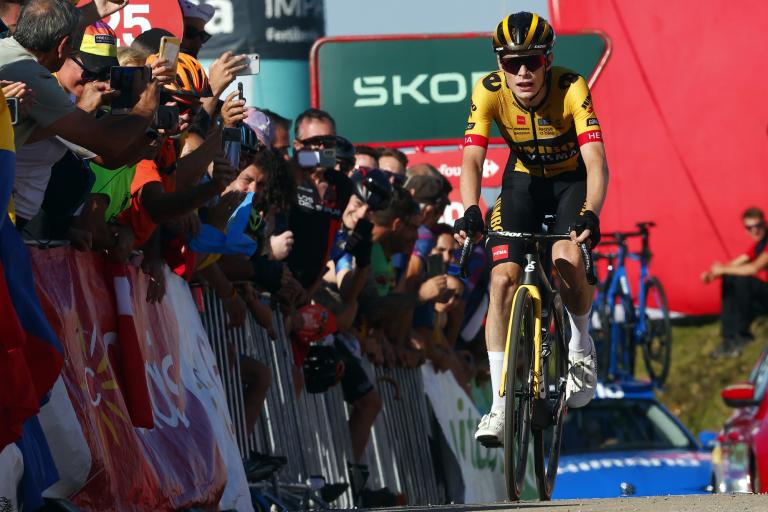
Jonas Vingegaard set to return to racing in the Basque Country at tomorrow’s Clásica San Sebastian and next week’s Tour of Poland, where Dane took first professional victory in 2019
After finishing second behind a rampant Tadej Pogačar at the Tour de France, just months after suffering what seemed initially like season-ending injuries at the Tour of the Basque Country, Jonas Vingegaard is already set to return to racing at tomorrow’s Clásica San Sebastian, before taking on the Tour of Poland next week, the Dane’s Visma-Lease a Bike team confirmed today.
After ruling himself out of the Vuelta a España, where he finished second overall last year, Vingegaard will instead begin his post-Tour campaign by returning to the Basque Country at Saturday’s Clásica San Sebastian, won three times in the last four editions by Remco Evenepoel, who will eschew the one-day race in favour of a post-Olympic rest period and a build-up to next month’s worlds that will include a Tour of Britain debut.
(A.S.O/Charly Lopez)
Vingegaard will be joined for the hilly classic by the in-form Sepp Kuss, who will head straight from today’s final stage of the Vuelta a Burgos which he currently leads, and promising British rider Thomas Gloag, who’s also on the recovery trail after winning a stage of the Czech Tour at the end of July, the 22-year-old’s first international race for almost a year.
Dylan van Baarle, Milan Vader, and Julien Vermote round out Visma-Lease a Bike’s team for San Sebastian, the new revised route of which includes the Pilotegi, a short but brutal climb that contains pitches of up to an eye-watering 27 per cent, located just eight kilometres from the finish.
“I was very tired after the Tour. For five days, I did absolutely nothing. I recharged my batteries and then started training again. Everything went well. I currently feel fresh and am ready to take on the next two races,” Vingegaard, who finished eighth in his only appearance in the Clásica in 2021, said in a press release today.
“It will be special to return to the Basque Country after everything that happened a few months ago. Fortunately, I also have many good memories of that region, so I am really looking forward to racing there again.”
(A.S.O/Charly Lopez)
Two days after racing the Basque classic, two-time Tour de France winner Vingegaard will then race the Tour of Poland, the scene of his breakthrough first pro victory in 2019, and a stage race the Dane says he has a “special bond” with and where he feels he has “something to prove”.
“The race in San Sebastián and the Tour de Pologne are two beautiful races. Moreover, I have a special bond with Poland. It was where I achieved my first victory in the WorldTour,” the Dane says.
“It feels like I still have something to prove there. In 2019, I won the hardest stage and I then started the next day in the leader’s jersey, but I couldn’t secure the overall victory.
“I am determined to win this year, but of course, the competition is not to be underestimated.”
09 August 2024, 10:54
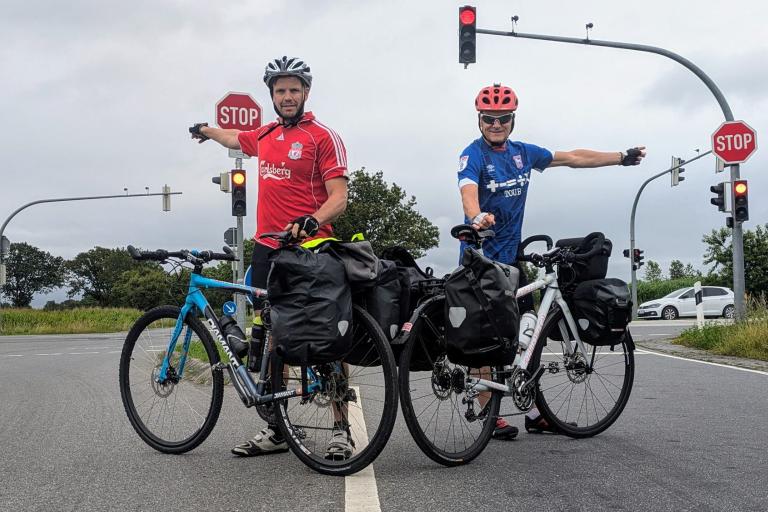
Swapping the tractor for a bike: Norwegian cyclist riding over 1,500km from Olso to Suffolk to watch Ipswich Town’s first Premier League match of the season against Liverpool
The new Premier League season is fast approaching (I know, those two weeks without football on the TV were rough – and no, I’m not counting the Olympics), so it’s time for that annual August football/cycling crossover tradition to pop up again: football fans riding their bikes inordinately long distances across Europe to watch a match.
This time, it’s the turn of Norwegian cyclist, bike blogger, and Ipswich Town diehard (yes, really) Richie Wiik, who’s currently halfway through his 1,500km-plus ride from Olso to Portman Road to watch his team’s opening game of the season, and their first top-flight match for 22 years, against Liverpool next Saturday lunchtime.
Wiik, who’s sofa surfing during his bikepacking tour of northern Europe to mark Kieran McKenna’s side’s long-awaited return to the corrupt, desolate landscape that is the Premier League, says he started supporting Ipswich following their famous 1978 FA Cup Final victory over Arsenal.
“I love cycling. I have different cycling blogs,” he told the Ipswich Star. “I’ve been an avid fan of Ipswich since I was in my early teens, and so I was waiting for the fixtures to be released.
“I saw Liverpool at home for the season opener, and this was my trigger to do something crazy to cycle all the way from Oslo to Ipswich.”
Wiik’s route involved setting off on 28 July and riding south from Oslo to Denmark, then through Germany and the Netherlands, before ferrying across to Harwich and riding on to Portman Road, which he hopes he’ll reach next Friday, with a day to spare.
“The most challenging part has been the logistics,” Wiik says, noting that he started with a Liverpool-supporting friend, who turned back when they reached Germany.
“I have so far stayed in everything from a tent in someone’s garden to hotels, but my biggest revelation was finding a website called warmshowers.org. It’s couch surfing for the cycling community and I am amazed by how many hosts there are in Europe.”
Writing yesterday on his Facebook page from Germany, Wiik said: “Arrived in the German town of Papenburg, cycling slowly westwards in the manageable headwind.
“Passing countless German villages and hamlets the last couple of days, right off the beaten track, I can truly say I’d never be here and seen all this if it hadn’t been for the cycling.
“I aim to enter Dutch territory tomorrow, and mind you I find even that somewhat hard to fathom. I’m still not totally convinced I'll make it all the way to Ipswich and that first top flight clash in over 22 years, but the whole idea is starting to dawn on me!”
09 August 2024, 09:57

Use of cargo bikes up by 73 per cent in London’s square mile and 63 per cent across the capital, new analysis shows
New analysis by the Clean Cities campaign has found that, between 2022 and 2023, the use of cargo bikes has risen by 73 per cent in the City of London, and by 63 per cent across London as a whole, as businesses shifting to cargo bikes continue to report faster and cleaner deliveries.
In the wake of the findings, Jack Skillen, a director at business improvement district Team London Bridge, told Forbes that more than 200 businesses in central London now use cargo bikes.
“The change in London Bridge has been dramatic and has a positive impact on the environment and the public,” he says.
The campaign behind the study, Clean Cities, a European coalition of non-governmental organisations encouraging cities to transition to zero-emission mobility by 2030, argues that greater cargo bike usage can reduce congestion, improve efficiency for businesses, and support the development of more liveable and healthier cities.
Speaking ahead of the annual Cargo Bike Cruise, which took place at the weekend and saw more than 80 cargo bike riders, and 54 local businesses, cycle around London to highlight the campaign’s aims, Jemima Hartshorn, the founder of the clean air campaign Mums For Lungs, said: “We must see London transition to a cleaner and greener city, so we must incentivise businesses to adopt not only electric vehicles but innovative and yet simple solutions such as the cargo bike.”
09 August 2024, 10:36
road.cc Recommends: the Summer Update
09 August 2024, 08:50
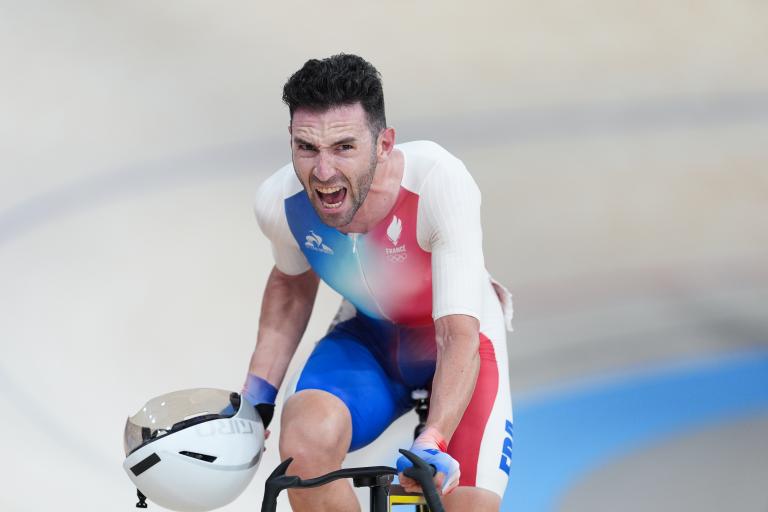
Farce, fast finishing, and French frenzy at the velodrome: Olympic track recap, as Thomas takes emotional Omnium win, Finucane pipped in keirin, and some feisty sprints lead to judges stepping in
Well, that was another wild night in the Olympic velodrome, wasn’t it?
Even the most hardened nay-sayers of racing around in circles would admit that, after home hero Benjamin Thomas secured an extremely popular gold in the Omnium in front of a raucous French crowd, and New Zealand’s Ellesse Andrews cemented her status as the best keirin rider in the world with an Olympic title, as GB’s Emma Finucane added bronze to the gold she collected in the team sprint earlier in the week.
However, it wasn’t without its farcical moments, especially in the farce-friendly men’s Omnium (but hey, in an Olympic track cycling competition where the ball lap has failed to ring on two separate occasions already, who doesn’t love the odd bit of chaos?).
(Alex Whitehead/SWpix.com)
After the opening tempo race was marred by delayed points and slow decision making by the commissaires – who, to be fair, have a difficult job keeping tabs on what at times resembles an unruly creche – the brilliantly intense and chaotic elimination race also saw a number of laps in which nobody was, in fact, eliminated, with the judges unable to call (with only a lap or two to decide) which rider crossed the line last in time, therefore giving everyone a reprieve.
Then French favourite Thomas, desperate for a good score to keep him in the hunt for gold, was knocked out with eight riders remaining, only for that that decision – after a quick debrief and to the delight of the home crowd – was swiftly reversed, as a frustrated Fernando Gaviria was instead sent packing.
Omnium juries after Thomas clearly got last in the elimination sprint #Paris2024 #OlympicGames #CyclingTrack pic.twitter.com/q4pSSvPDTJ
— Olympic Games Memes (@Cycling_Memes1) August 8, 2024
That U-turn by the officials allowed Thomas to cling on for third, behind second-placed Elia Viviani (who was later demoted for a dodgy manoeuvre during the race. I know it’s hard to keep up) and an expert from-the-front performance by Ethan Hayter, whose suffering in the heat of the velodrome ultimately led to him feeling like he was “stuck to the track” during the decisive points race.
And it was during the points race where Thomas took advantage of that fortuitous elimination decision, riding a perfectly judged race to gain two laps and leapfrog Belgian Fabio van den Bossche (who was forced to settle for third) and win a hugely popular gold, as Portugal’s Iúri Leitão also secured his country’s first ever male track medal with silver.
(Alex Whitehead/SWpix.com)
Oh, and what’s more – Thomas, in true French style, even managed to crash during the latter stages of the points race, jumping back on his bike to complete the job as he was roared on by the deafening home supporters, who didn’t disappoint when it came to a jubilant and emotional rendition of La Marseillaise during the medal ceremony.
The Omnium is maybe my favourite olympic event. Four increasingly weird cycling races with contrived rules that sound like I made them up. It's just heaven
— Ivan Brett (@IvanBrett) August 8, 2024
I told you it was dramatic. (Oh, and that’s Ivan from the Traitors series one tweeting about the Omnium, in case you were wondering.)
And the drama and the chaos continued in the men’s sprint quarter finals, where Japan’s Kaiya Ota thought he had progressed to the next round after beating GB’s Jack Carlin 2-0 in a feisty match marred by flying elbows from Carlin and Mark Renshaw-esque headbutts from Ota.
(Zac Williams/SWpix.com)
However, the judges relegated Ota for the unnecessary use of his head, and Carlin promptly won the decider to book his spot in the semis. His teammate Hamish Turnbull will be missing from that round, however, despite giving favourite Jeffrey Hoogland by beating him in their first match, before the Dutch star roared back to prevent the upset of the round.
Meanwhile, Emma Finucane’s seriously impressive Olympic debut continued, as she bagged a bronze in the women’s keirin, as world champion Ellesse Andrews of New Zealand showed her class to add an Olympic title to her collection, while the Netherland’s Hetty van de Wouw pipped Finucane at the end for silver. The Welsh star’s gold medal-winning team sprint colleague Katy Marchant finished fourth, ahead of Emma Hinze.
(Ed Sykes/SWpix.com)
“Going up in that final and scraping through the semi, I knew I had to find something in my legs that I hadn’t seen before,” Finucane told the BBC after the race.
“Ellesse is world champion, she has demonstrated today that she is so strong. All of the other girls in that final, we’re the strongest girls in the world that’s why we are in the Olympic final. And to even be there next to one of my best friends, Katy, was such a pinch me moment.
“To get a bronze medal, it literally feels like gold to me because I left everything out there on the track. If you told me a year ago I’d be coming to the Olympics and getting a gold in track sprint and then bronze in keirin, I would’ve been like ‘no way’ but here I am.”
And to think, there’s more drama to come today. But let’s just hope all the bells ring in time and all decisions are made promptly, okay?
After obtaining a PhD, lecturing, and hosting a history podcast at Queen’s University Belfast, Ryan joined road.cc in December 2021 and since then has kept the site’s readers and listeners informed and enthralled (well at least occasionally) on news, the live blog, and the road.cc Podcast. After boarding a wrong bus at the world championships and ruining a good pair of jeans at the cyclocross, he now serves as road.cc’s senior news writer. Before his foray into cycling journalism, he wallowed in the equally pitiless world of academia, where he wrote a book about Victorian politics and droned on about cycling and bikes to classes of bored students (while taking every chance he could get to talk about cycling in print or on the radio). He can be found riding his bike very slowly around the narrow, scenic country lanes of Co. Down.
Latest Comments
- JimTheGlawsFan 2 sec ago
Absolutely, had a conversation with the PC that can't do anything about it after I have loads of photos of it in Gloucester....
- the little onion 10 min 35 sec ago
On the balance of probability, I will go with TROLL
- David9694 28 min 34 sec ago
This isn't one of those "aren't GatorSkins terrible" threads is it? Isn't the complaint that they acquired a smooth glossy sheen? ...
- HLaB 1 hour 34 min ago
That's more than double my car mileage but I'm kinda in the same boat, but I don't feel jealous of folk I'd rather have the freedom to spend my...
- quiff 1 hour 44 min ago
The intent is interesting - you might argue that the intent is deterrent and you never intend anyone to actually come into contact with the gas - a...
- howyaBen 2 hours 2 min ago
I like the measure of effectiveness of the new Hutch tires, % of wattage improvement. Instead of saying, "28.6 watts at 49.34 km per mile a nano...
- David9694 2 hours 2 min ago
Random driver account: "cyclists should be made to wear hi viz like workers do on a building site"....
- quiff 2 hours 14 min ago
"The algorithm" served me an older JV video last week which I now can't get out of my head....
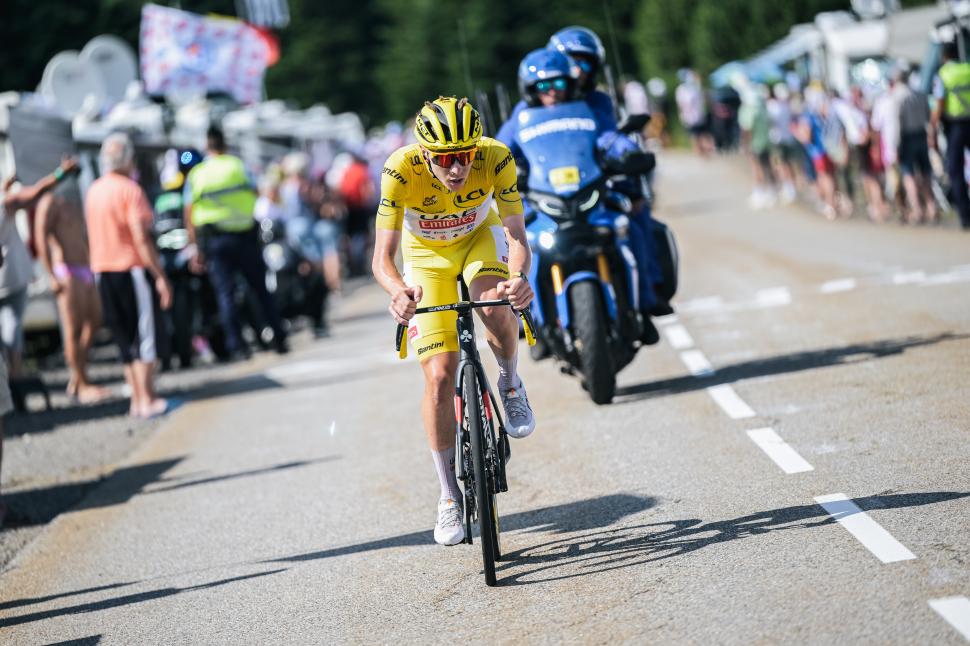
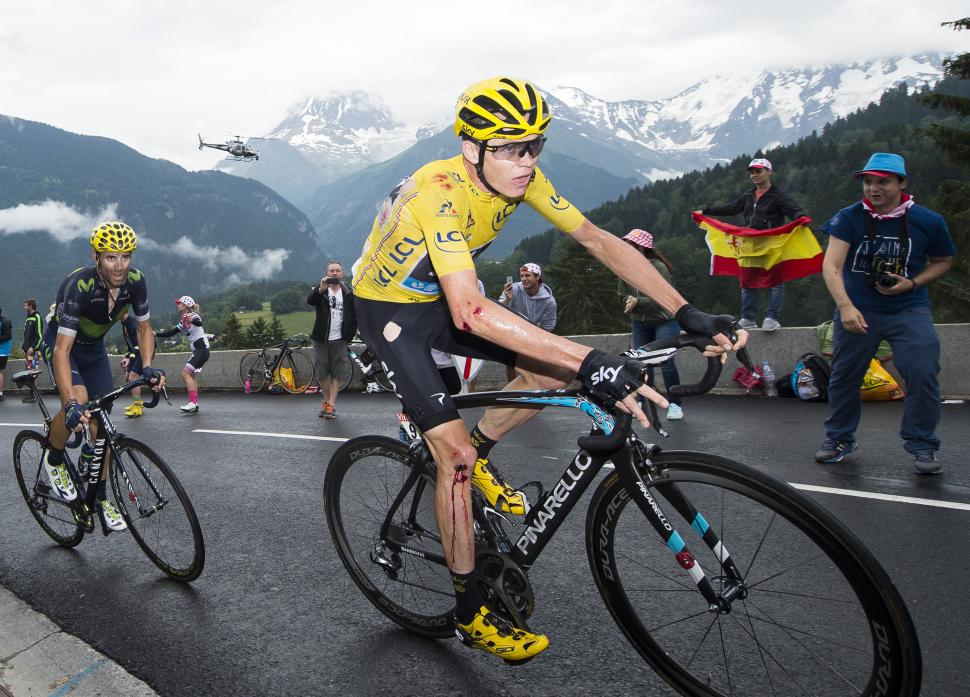
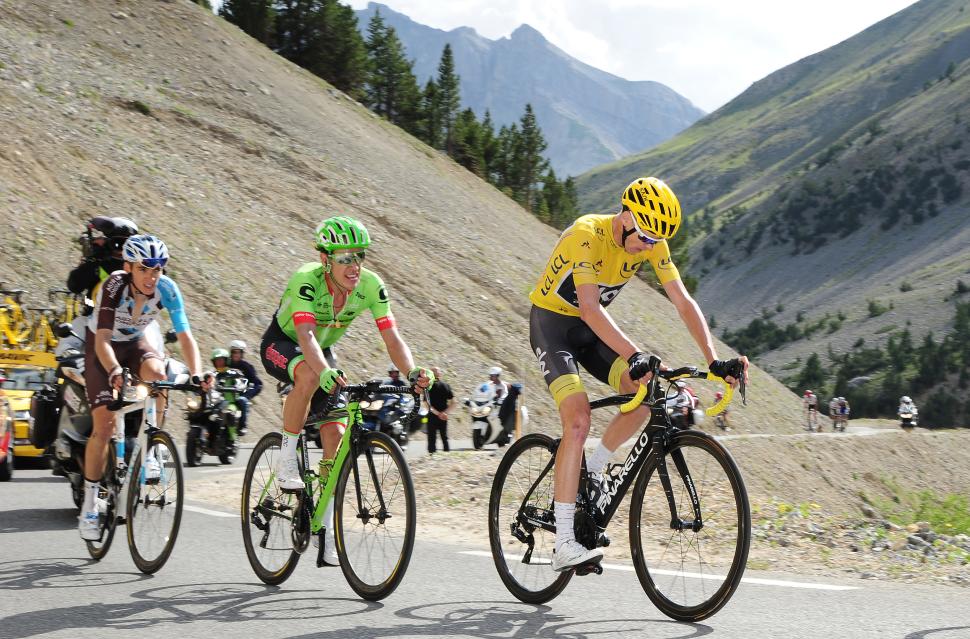

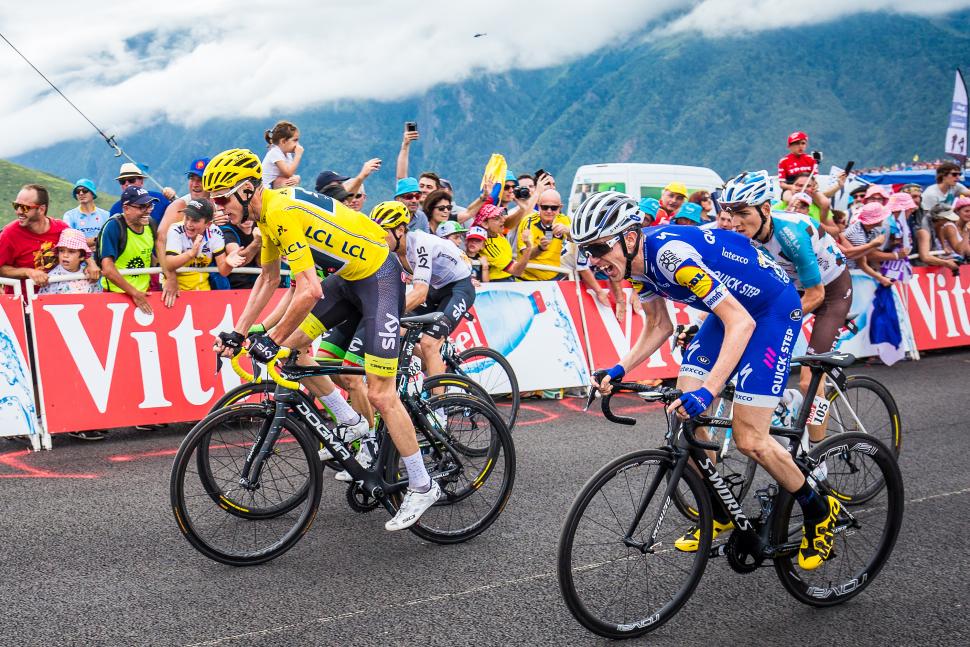

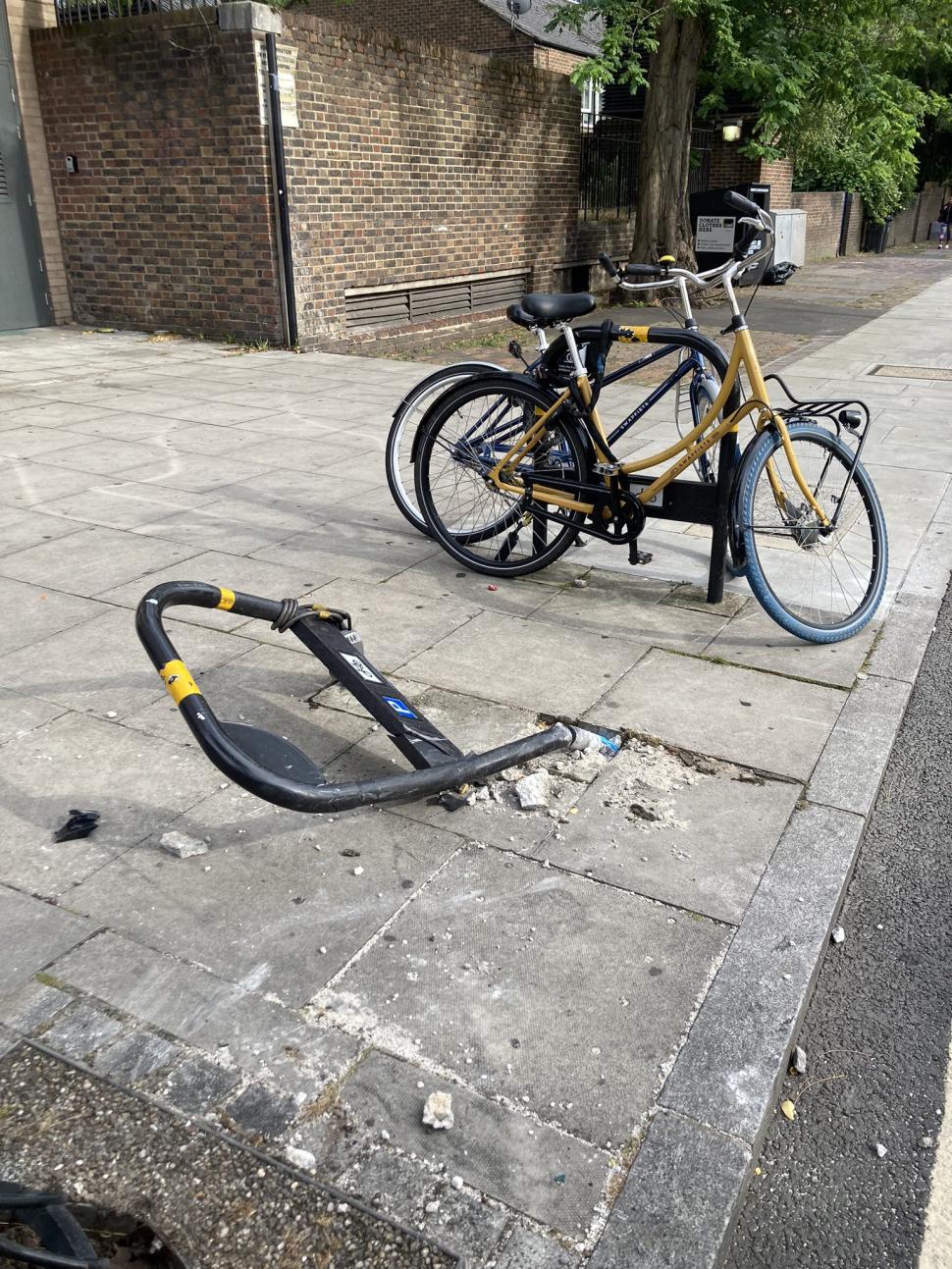
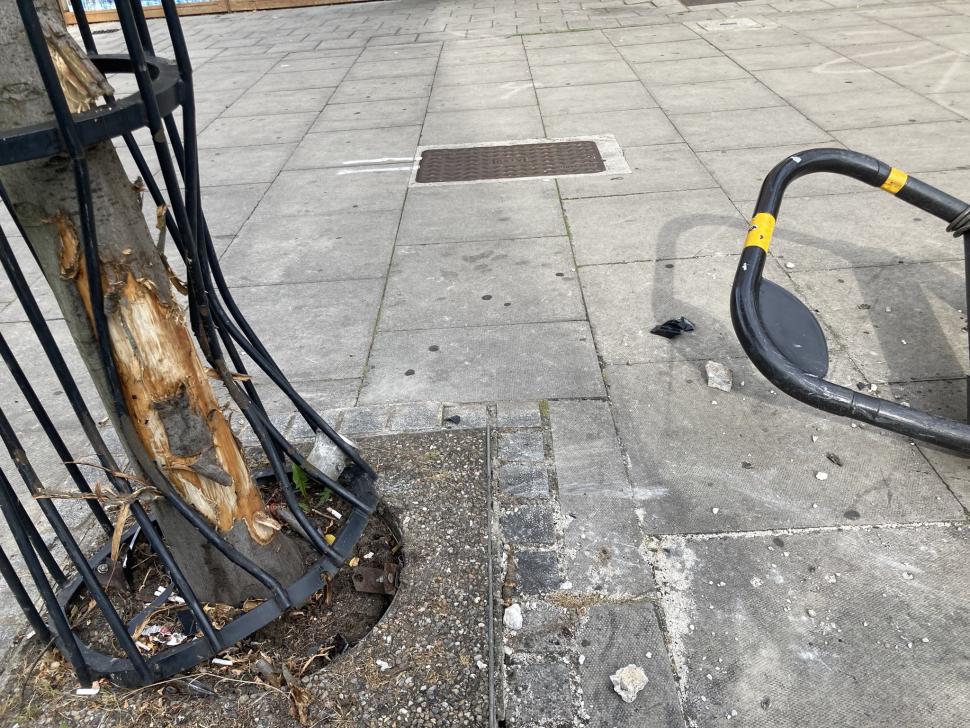

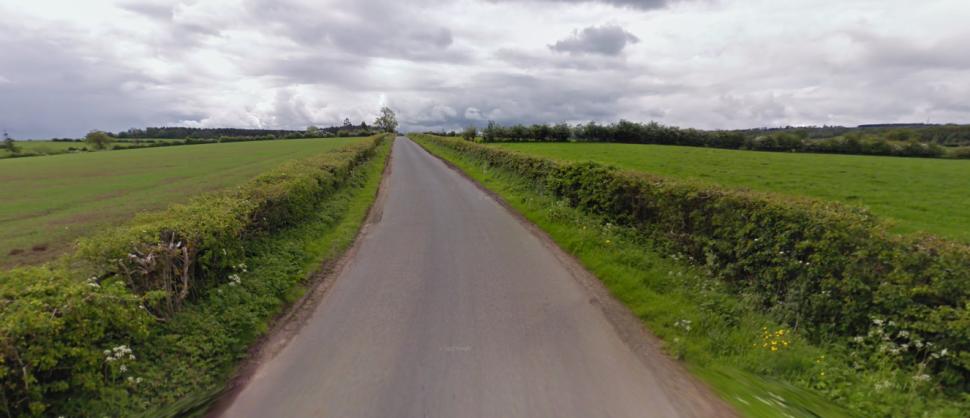
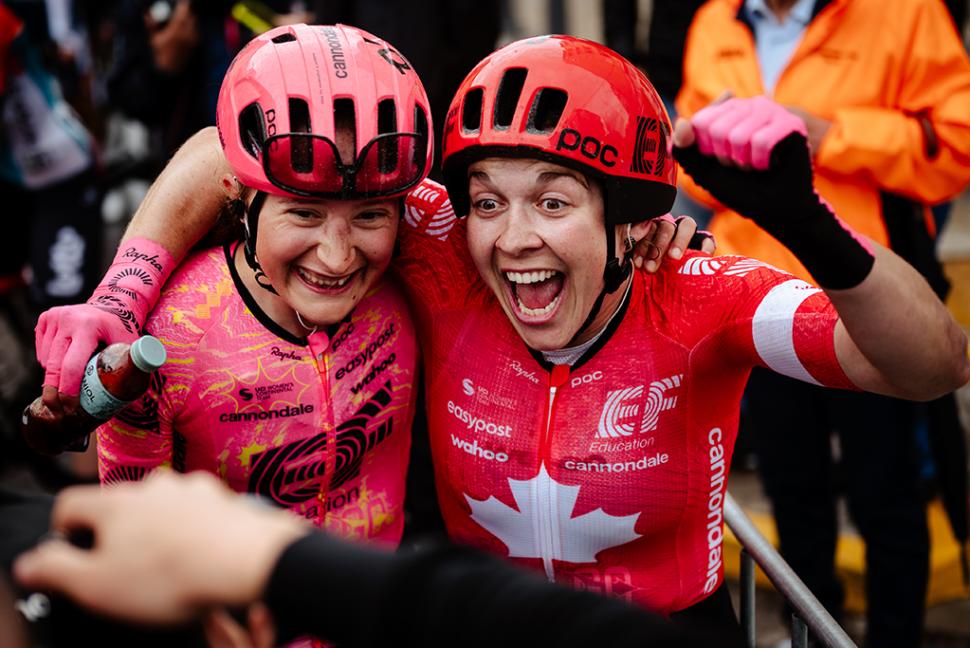
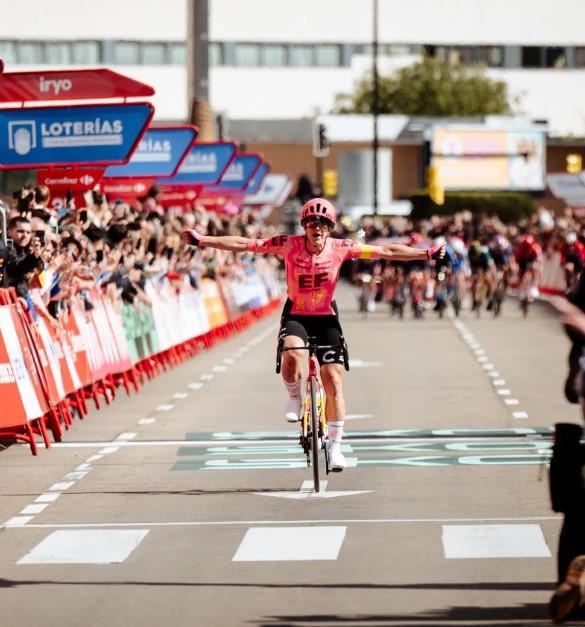
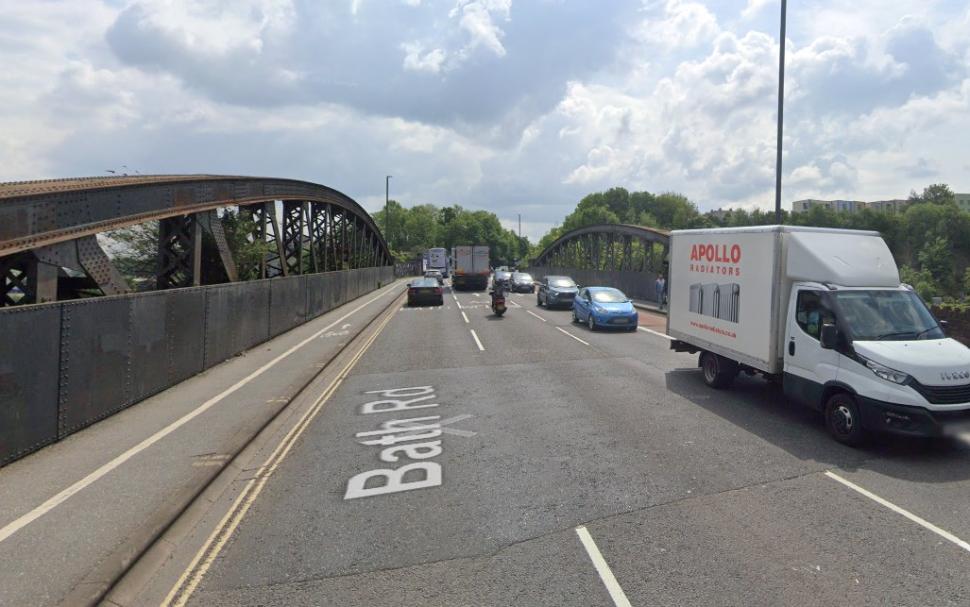
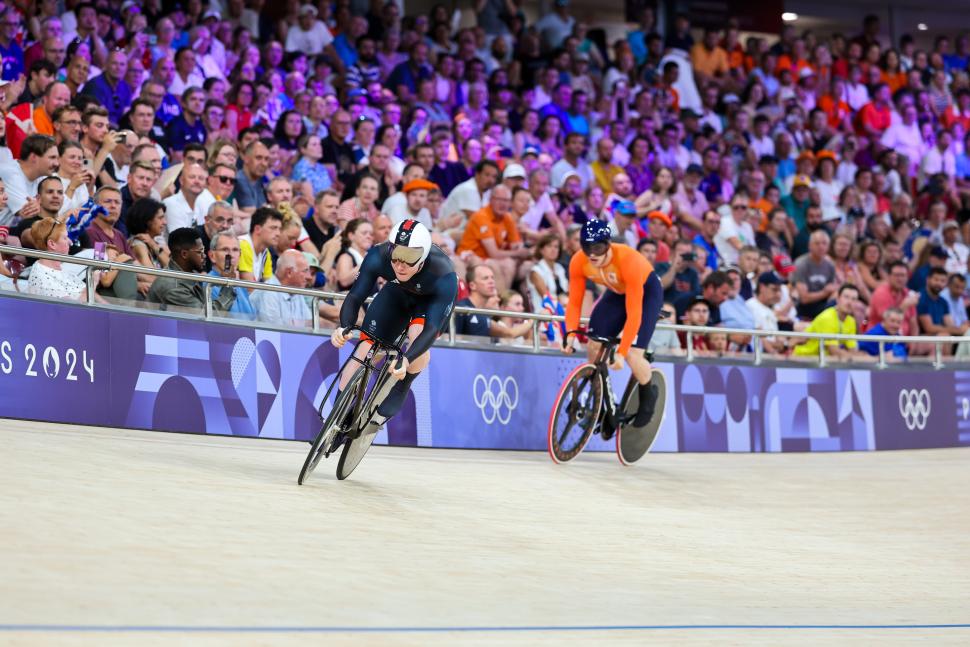
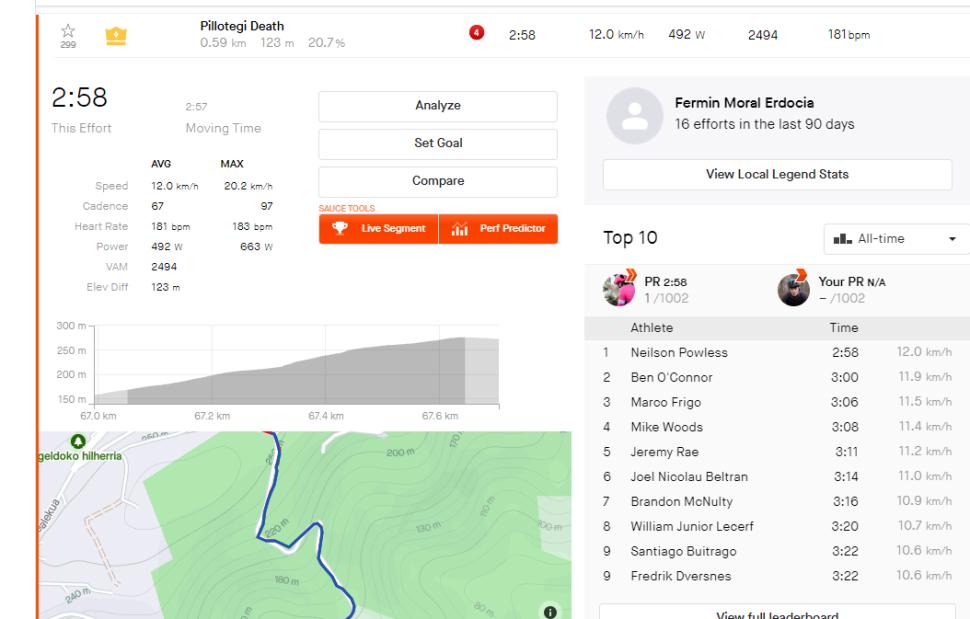
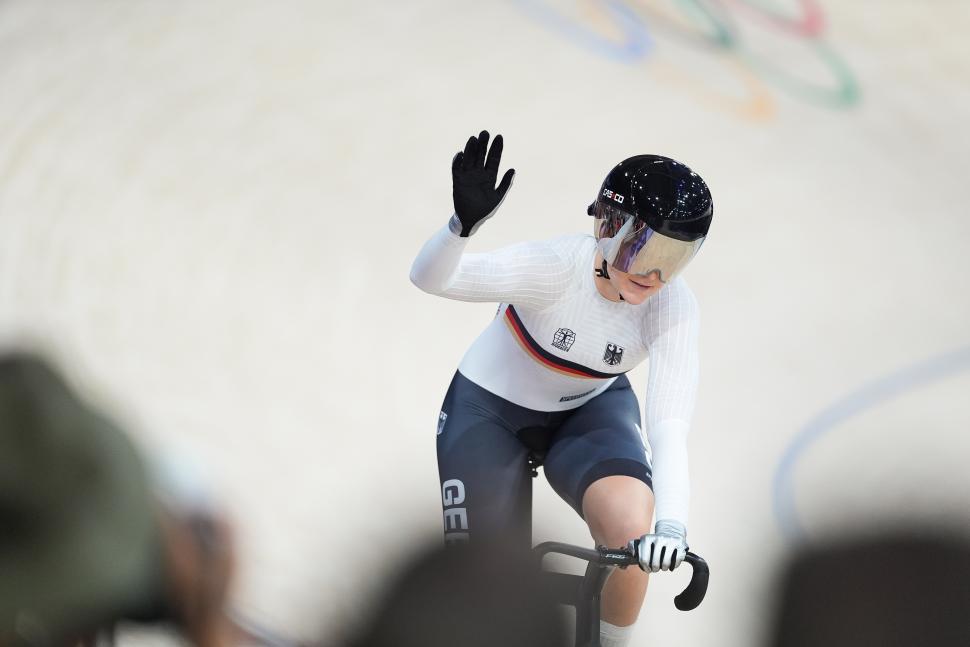

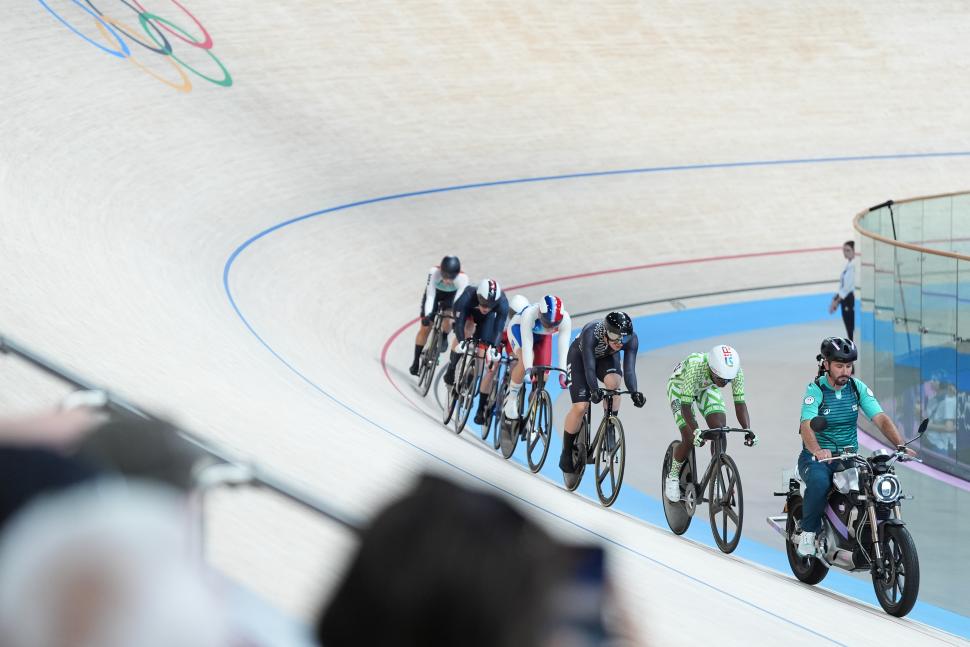
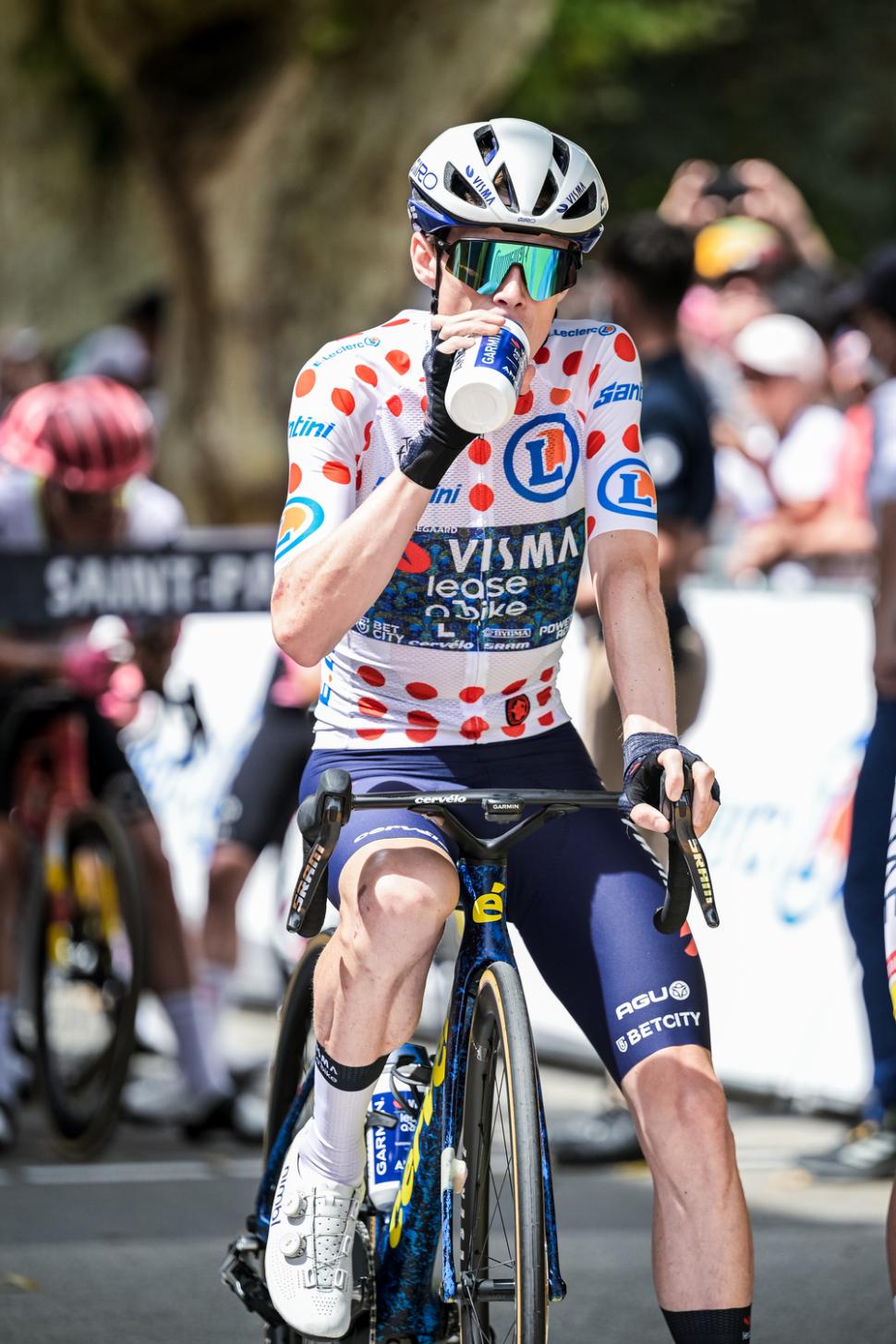
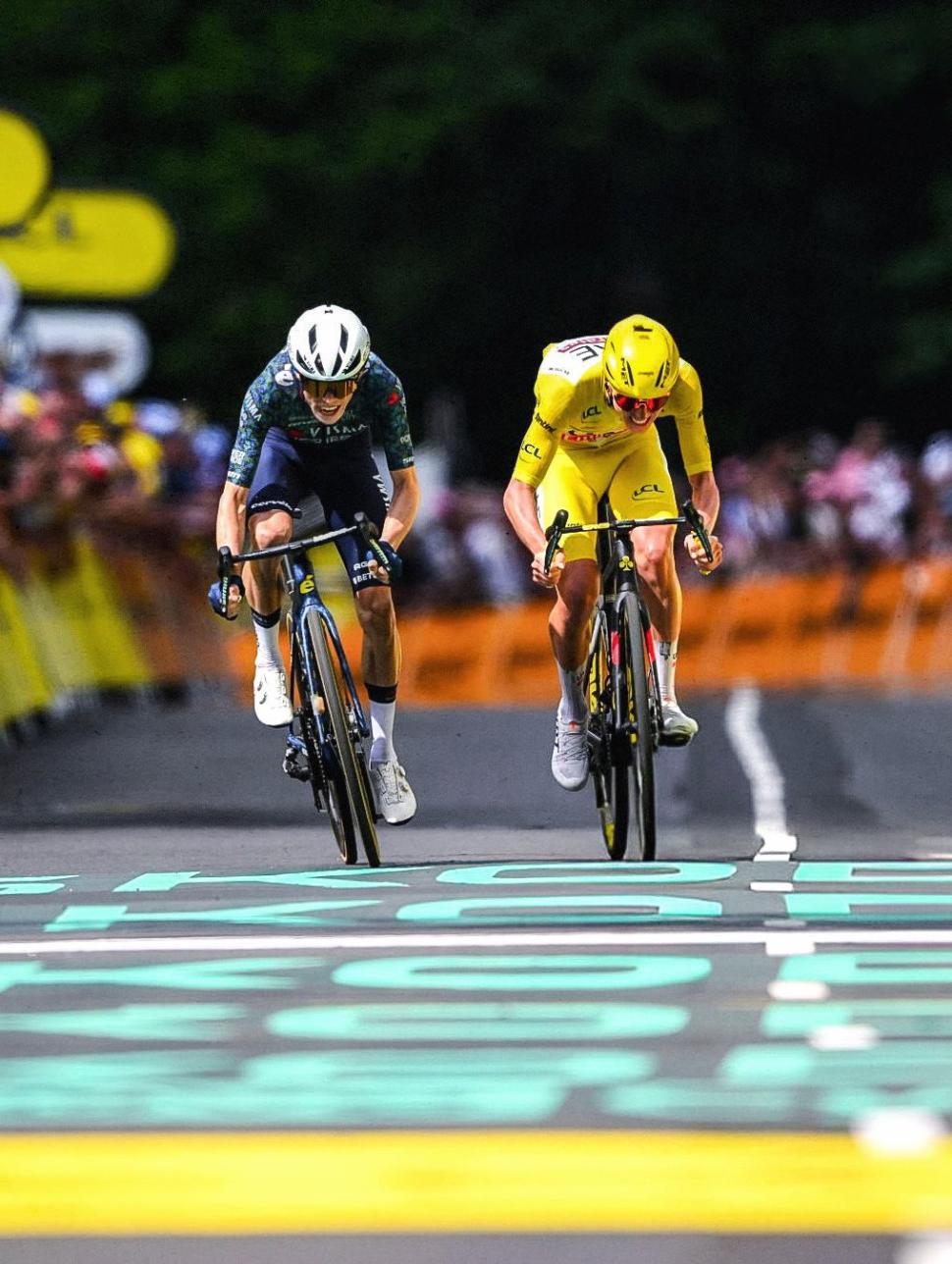
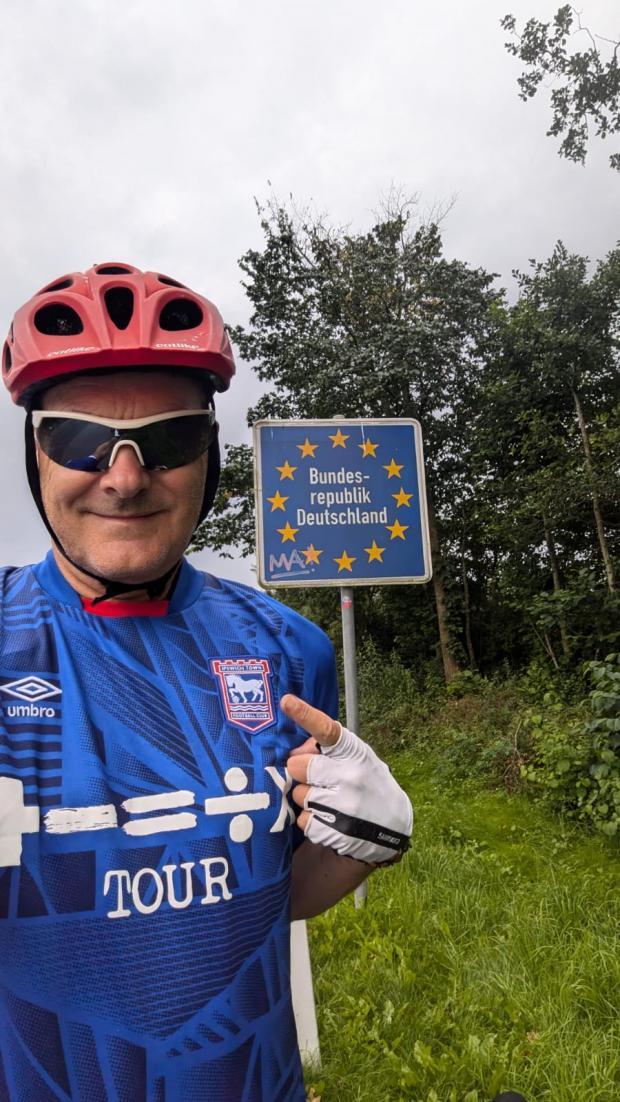
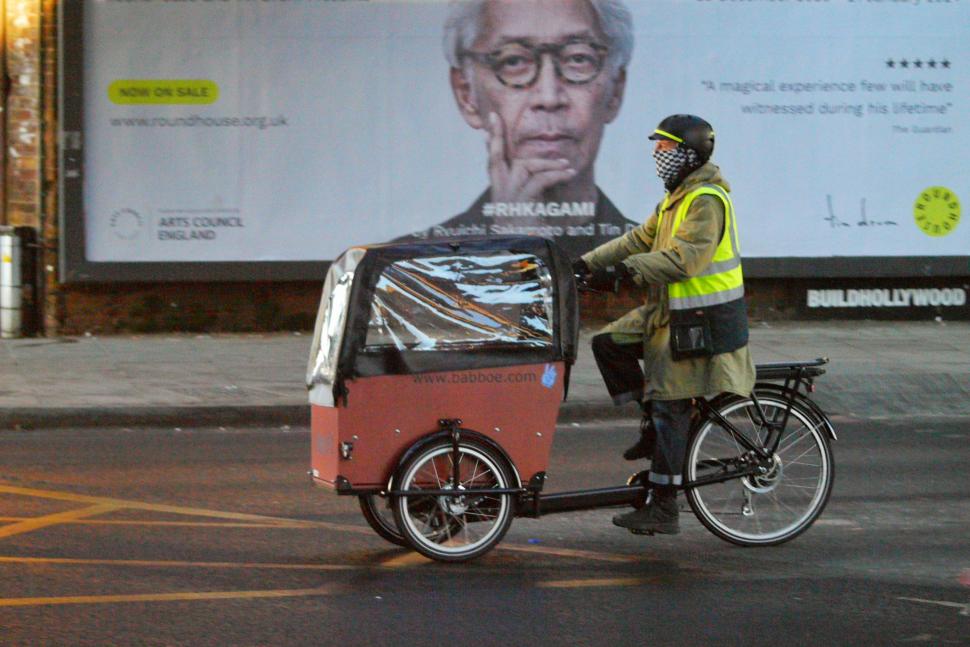
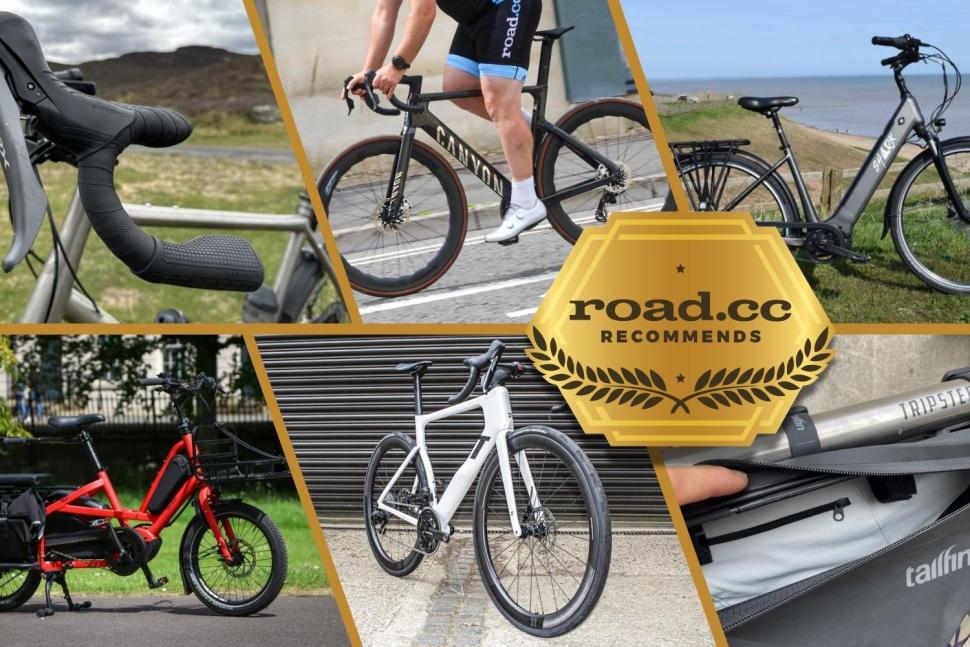
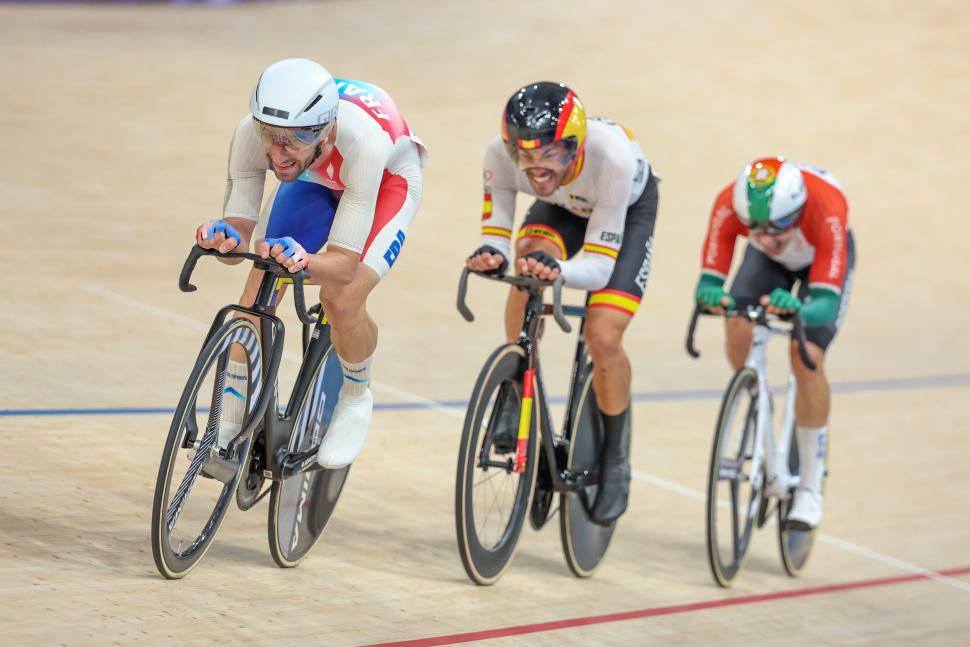
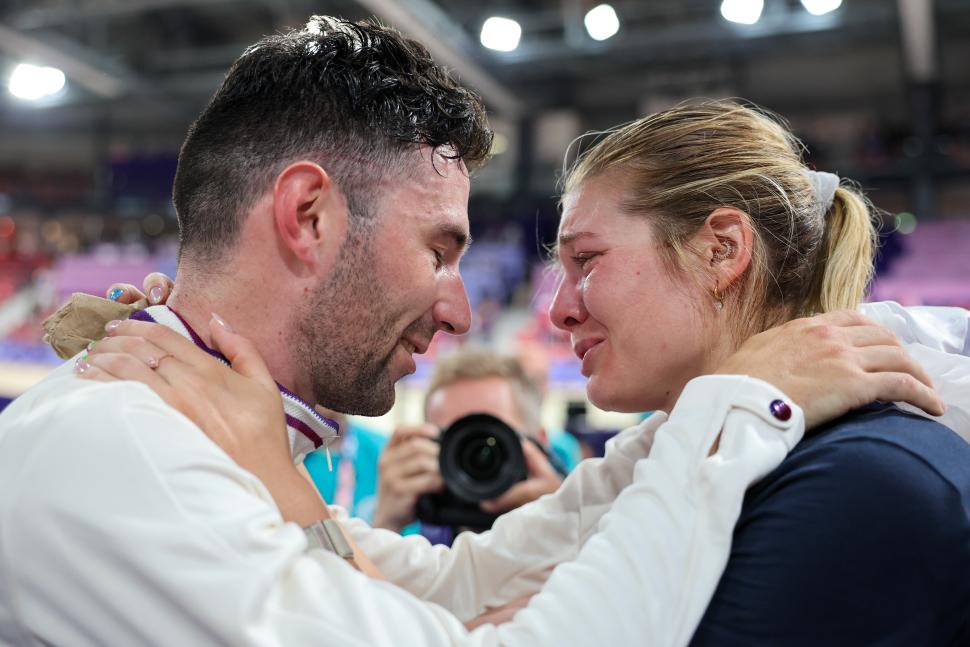
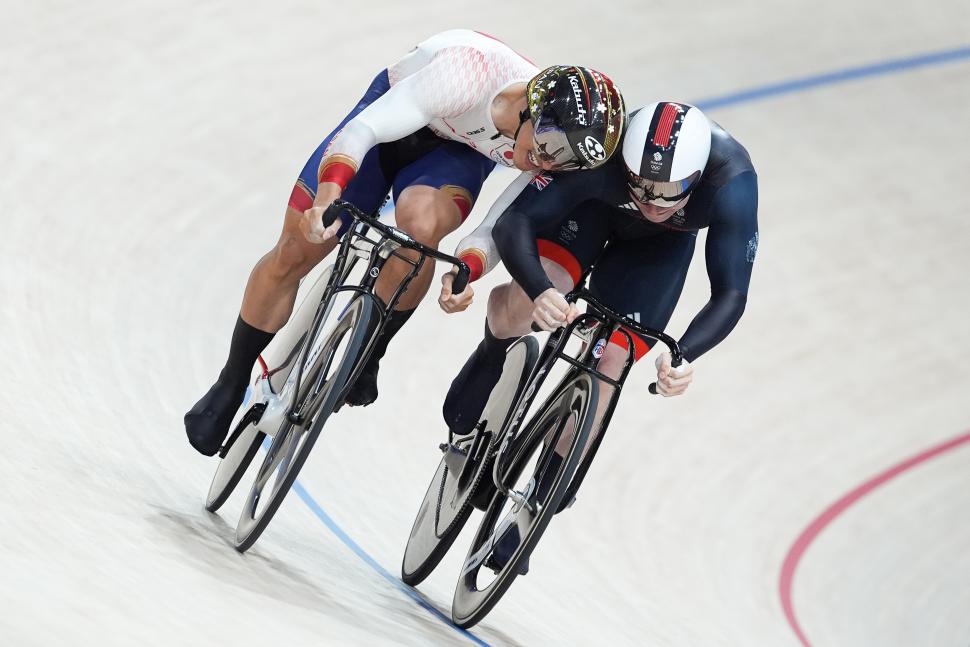

Add new comment
38 comments
I was cycling in Tenerife in 2016, and went there in large part because it was already well-known that many teams went there for altitude training - the hotel up by El Teide exists exists in at least part to serve athletes. It's been there since the 1950s. Tenerife was already advertising its suitability for cyclists to train at back at least in the 1960s - they brought Eddy Merckx over to help with marketing. I don't know where he stayed, perhaps at altitude at Parador Canadas - he was certainly aware of at least some of the effects of altitude training, and actually had a training rig with an oxygen mask to breathe /reduced/ oxygen air at home! (kind of wrong way around in modern thinking...).
I was a week in Tenerife, and I saw the Saxobank team in Los Cristianos, and a couple of Slipstream / Cannondale Riders riding down from El Teide early in the morning, with a moped rider, as I was going up. So Cannondale evidently were staying up at the altitude hotel. (Going down for motor-pacing training I assume).
Obviously, Pogacar's staff have managed to find fluffier pillows than Sky had back in the day. That's the only explanation.
A few stories from Leicestershire.
https://www.leicestermercury.co.uk/news/local-news/woman-30s-dies-after-...
https://www.leicestermercury.co.uk/news/local-news/drug-driving-dad-who-...
My thoughts are with Colin's friends and family.
You'd have thought that coked up and on the phone could and should have been enough to get a jury to convict on dangerous. Especially with the toe rag lieing and blaming the victim.
Ref Chris Froomes comments. It does make me wonder how in the space of a few years - not decades, the top riders seem to have become near super human in their achievements. Is it the bikes? They all have the same bikes which if anything are heavier than a few years ago. Is it nutrition? Teams will offer it to all their riders too so no real jump there. What else could it be? How are a handful of riders become so good all at the same time and one especially bad numbers that are other worldly in their size?
And then I think, how old are they? When did they start on the pro scene and when did bio passports become a thing?
A bio passport can tell you any strange peaks and abnormalities in a riders bio chemistry. But what if they were always there from day one? What is abnormal?
once every so often you get a wonder kid or a talent do good they leave everyone behind. But to have 3-4 all at once? Are Pogacar, Vingegaard and Evenapoel really so much better than every else? The gap between these and the next best riders is cavernous.
It could just be one big coincidence I guess. Who know?
The biological passport has been around in cycling since 2008, so certainly will have followed the current riders all their professional lives.
The gap between Pogacar and the rest is large but by no means cavernous, yes he's won three Tours but he's lost two, he's yet to win a WC title and so on. Also it's clear that he's a once-in-a-generation talent, possibly a once-in-a-lifetime talent like Merckx. The others aren't so far above the rest and the fact that plenty of other riders have won big races, world championships and even GTs (Kuss, Geoghan Hart, Bernal, Carapaz, Yates, Hindley, Dumoulin, Thomas, Aru, Quinatana all in the last decade) shows they're not quite as dominant as is sometimes claimed. That's before you even talk about the other extraordinary riders like MVDP, WVA and so on. It's not just three or four at the top.
The biopassport is there to catch really dumb dopers, who dope without the support of bio-science / medical staff to keep them "within the lines". It won't catch anyone who knows what they're doing, is my impression (from being around some sports scientists for a period - sports scientists who had grants from WADA for anti-doping studies).
As I commented below, riders can now take in and utilise up to 250g of carbohydrates more over the course of a 5 hour race than was thought possible just a few years ago. That's around 1,000 (kilo)calories give or take, enough for an hour's hard effort for a decent amateur and enough to make a massive difference for a pro towards the end of a stage, not to mention how well they can recover for the following days if they're not completely depleted. So a gifted athlete beating a doped athlete's 'record' on a long climb by 3 minutes at the end of a mammoth stage with today's training methods, altitude camps, nutrition, aero equipment (which makes a difference even at 20kph), power meters etc etc is entirely feasible, especially considering the doper was probably riding on fumes by the end of the stage.
I've been wrong before - I was an LA believer - and was very skeptical of Pog and Roglic after Operation Aderlass when the UCI announced an investigation into Slovenian cycling in general. However, I am slowly starting to believe again....
And let's not forget the energy saved throughout the day on the way to the climb, when people say the extra two kilos of bike weight and aerodynamic advantages wouldn't make an enormous difference on a climb they are forgetting all the extra energy it took the previous generation of riders to get those heavier, less aerodynamic bikes to the foot of the climb in the first place.
It's like listening to battered wives defending their abusers in here. If you think this current crop of riders are getting better power numbers than peak doping of 20 years ago with a few extra grams of carbs, aero frames and fat tyres then good for you.
Aero frames save an estimated 80W at 20mph (more at peleton speeds). Tubeless wide tyres maybe 20W. 2kg of weight saved, maybe another 10W. Take two riders of equal capabilities on identical bikes except one has a 110W motor, ask them to ride 150kms at the same pace and then take away the motor and put them on an alpine climb, are you really going to be surprised if the one who was getting 110W extra assistance all day has more power left at the end? "A few extra grams of carbs" - as Jakrayan has pointed out, modern gels allow riders to take on board around 20% more fuel than the riders of just a few years ago, let alone the "peak doping" era when nutrition wasn't far off the jelly babies, fig rolls and ham baguettes days, the effect that will have is surely obvious. Then you completely ignore the effect of altitude training, pretty much absent back then and part of every pro's programme now; altitude training has much the same effect as doping in increasing EPO production and so improving oxygen supply to the muscles, increasing VO2 max and improving lactic tolerance. So, you have huge power savings from equipment, massive extra fuelling capacity and training methods that greatly increase the amount of oxygen supplied to the muscles, if you think all that won't increase power numbers then good for you.
Aero frames don't change your w/kg figures!
an article on this very website demonstrated that Pantani was riding a bike as light of lighter than todays bikes.
altitude traning has been understood for at least 30 years, Boardman utilised it for the Barcelona Olympics.
peak doping era nutrition was no more than jelly babies and a can of flat coke? Seriously? In the days of Dr Ferrari? Get a grip for heaven's sake man.
"power savings to reach the climb fresher" is absolutely meaningless, you get there as quickly as the peloton gets there. If you're all on steel tube frames and box section rims you just get there slower. On the climb you'll do whatever watts you can do. 7w/kg is unnatural, just like 6.7w/kg was 20 years ago
Yes, in fact they will, because as I tried to point out if a rider has been using 100 W less power all day clearly they will have more power left at the end. As a matter of fact the watts per kilo figures haven't changed that much, Pogacar is putting out around 7 W/kg for 15 minute periods on climbs, Pantani is estimated to have done about the same. The difference is that Pogacar can do it more regularly and for longer periods, in large part due to the amount of power he will have saved on the flat due to equipment, far superior fuelling strategies and the effects of prolonged training at altitude.
The current average speeds in the Tour are only about 2 km/h faster than they were in the 2000s, or 5%, and yet they are riding bikes that save around 100 W at 40 km/h, or 30%. Of course that will deliver riders to a final climb having used less effort to get there and therefore they will be able to sustain peak power for longer. There is nothing "unnatural" about 7w/kg, by the way, I'm 55 and don't race and I can put out 7w/kg and more easily, the difference, obviously, is the length of time that power can be held, for me about 20 seconds, for the pros 15 minutes+. Still, if you want to persist in your strangely desperate desire to claim that superior fuelling, altitude training and bikes which require a lot less power for the same speed don't make any difference and Pogacar and all his close rivals are definitely on drugs, in your own phrase, good luck to you. I prefer to give them the benefit of the doubt until proven otherwise.
I've got to agree with Nick. The advantages of aero frames are negligible when you're sat in the middle of the peloton. The idea that a few more carbs are allowing the current crop of riders to eclipse the superhuman performances of the EPO era is fanciful in the extreme. I enjoy watching the performances of the likes of Pog and Remco, but I'm not naive enough to believe that they're clean.
As I pointed out, it's not "A few more carbs" but around 20% extra fuelling. Riders aren't always in the peloton, are they, particularly on a mountain stage between ascents. Another factor which has not yet been mentioned here is the far greater comfort of modern frames, wider tyres and lower pressures, anyone old enough (as regrettably I am) to have ridden 1980s road bikes on 21 mm tyres through to the bikes available today will testify that modern bikes and tyres are far less fatiguing to ride, another thing to take into account when considering why riders appear to be arriving on final climbs much less fatigued than their predecessors. On a wider point, athletic performances always have improved and will continue to improve, it's ridiculous to say that however many improvements in training, nutrition and machinery there have been, and I've been at pains to point out that they have been huge, anyone who matches the times of the EPO cheats* must be cheating themselves. On that basis Usain Bolt must've been cheating because he ran far faster than Ben Johnson? Fausto Coppi took seven packets of amphetamine to break the hour record in 1964, does it follow that everyone who has broken the record since must have been doping?
*When you talk of the EPO era it should be remembered that altitude training is effectively legal doping in that it naturally increases EPO levels so it is not that surprising that athletes who now undergo substantial amounts of altitude training that brings their EPO level close to those artificially achieved by the dopers should be achieving similar performances.
No, they're not always in the peloton, but GC contenders are very rarely on their own until they're on a climb.
It just seems incredible that riders such as Armstrong were doping on an industrial scale when all they needed to do was eat more and they would have achieved better results than from the drugs.
And hypoxic tents and altitude training have been around for decades. Armstrong himself did significant altitude training.
Today's riders aren't just matching the EPO era, they're outperforming it by a good margin. I'd love to believe they're doing that clean, but it seems very unlikely to me.
That's true but then they benefit from the benefit their domestiques have got from needing less effort to lead them; I'm sure you've noticed over the last decade how much longer and deeper domestiques are carrying their leaders up climbs, something which would would indicate that they are arriving at the climbs less exhausted than in the past.
Come on, firstly you know I haven't said anything of the sort, "all they needed to do was eat more" forsooth! I've tried to detail a multitude of reasons why performances may have improved without having to accuse riders of doping. In terms of nutrition though, I refer you again to Jakrayan's comment that new products now allow riders to consume 120 g of carbs per hour whereas before 90 g was regarded as the upper limit, it's not a question of all they needed to do was eat more, they were eating as much as they could without making themselves sick, now they can get significantly more in the tank.
Armstrong said he used an altitude tent, yes, and maybe he did, but I wonder how much that was pre-emptive misinformation to try and explain away his high EPO levels if he did get caught.
I've heard this all before: they're not cheating, it's just this-that-and-the-other advance.
I don't doubt many of the strides that have been made, but what I do doubt is that they add up to anything like enough to thoroughly eclipse the times and power outputs of an era of epic doping.
Let's not forget how few people got busted for doping in that era. The lack of positives now should be treated with similar scepticism.
Let's also not forget that the biological passport did not exist in that era. You say you doubt that the advances in cycling are anything like enough to eclipse the times and power output of the EPO era, and yet as detailed here they are riding bikes that are 100 W more efficient, using nutrition that allows them to take on 20% more fuel, and undergoing sustained and regular altitude camps that effectively replicate in a natural way the effect of EPO. These are facts and you say you don't doubt them and yet you still insist that they must be doping? I'll ask that question again that I asked above, because Ben Johnson smashed the world record and took the Olympic gold for 100m in 1988 and was subsequently proved to be on drugs, does that mean that all the athletes who have beaten his world record time since, and particularly Usain Bolt who obliterated it, must've been on drugs? The advances in track technology and running shoes have been nowhere near the advances in cycling over the last quarter of a century, so they must've been doping as well?
ETA I've probably made it clear by now, but I really hate the lazy accusation that anybody who turns in an amazing performance in cycling must be doping. These are quite extraordinary young men and women who put themselves through training regimens and physical demands in racing that we could not possibly imagine and make incredible sacrifices and indeed risk their lives for our entertainment. Unless and until it is proved that they are doping they deserve better than baseless accusations that of course they must be because dopers back in the day didn't achieve their times when they were on much less efficient bikes, less accurate nutritional regimes and with much less effective training programmes. Unless people can produce proper evidence rather than "I think there must be something going on" it's silly and disrespectful.
Forgot to add something which was on the tip of my tongue, in part possibly thanks to a fractured skull and concussion just over a year ago due to a crash (not my fault) during a training race a little over a year ago. NB definitely NOT trying to start the helmet debate all over again!
Talking of equipment, in addition to aero gains, lower rolling resistance and so on, the 'easier' gears have definitely made a significant impact. When the pros are riding 34x34 on some of the bigger climbs, you know there's something to it. A higher cadence means you can produce the same power at a lower torque, which is less fatiguing as you are (counterintuitively perhaps) using the slow-twitch, endurance muscle fibres rather than the fast-twitch ones which are more suited to short, hard efforts like sprints and Classic-type climbs. Basically you can sustain the same power for longer at a higher cadence, though the exact cadence is different for different riders, not everyone can 'spin to win'. An an, admittedly anecdotal, example, I rode L' Alpe d'Huez a good few years ago with 39x25 as my bottom gear, and was just outside the hour to the TdF stage finish. I went back the following year - same weight, same FTP, same bike similar weather (little to no wind) with a 29 at the back and went up 2 full minutes faster - 58:31. The lower gear was the only difference I am aware of.
So can a much better trained and fuelled rider on vastly superior equipment beat the record set by a doped athlete running on fumes by 3 minutes on a long Pyrenean climb? Of course he can.
The "but the bikes are better!" stuff is a complete smoke-screen. If the power meter and the weighing scales say 7 W/kg, the equipment is irrelevant. If we're estimating power from time up a climb using calculations, well, we can take improvements in CDa and rolling resistance into account in those calculations, and still arrive at a good estimate of the human W/kg.
7 W/kg is a significant improvement over 6.7 W/kg - and it's not the equipment, by *definition*. And if the free-reign EPO and blood dopers in the 90s and 00s couldn't get past 6.7 on ~40 min climbs, well...
While remaining agnostic on the doping front, you've fairly comprehensively missed Rendel's point here. He's saying that the equipment allows for less exertion and fatigue prior to the climb. If that's true (again, not taking a position either way here), then they'll have more in the tank to put out more watts for longer on the climb (and would do so even if they switched to a vintage bike at that point - or, for that matter, if they decided to ride up it on a
Boris BikeKen Cycle).That was indeed my point, it wasn't necessarily that vintage bikes would not climb as well but that modern bikes would deliver the rider in fresher condition and, as you say, allow them to ride harder for longer. Another point that hasn't been addressed is the fact that Pantani & co were riding with a 42/25 maximum low gear (in fact Pantani had a 23 largest cog, claiming that anyone who needed more was not a proper climber), what effect did that have on muscle fatigue by the end of the race compared to someone spinning up climbs on a 40/30? Throw in the capacity to take on 20% more carbs and that's a lot of factors to consider, and to consider more seriously than simply stating "that doesn't make enough difference".
I'm still waiting for any of the skeptics to answer my question with reference to Usain Bolt and Ben Johnson: if somebody breaks a record that was previously set by a known doper, does that mean that the person who set the new record must de facto also be doping? That appears to be their position, in which case every current world record holder in any speed or endurance or strength sport must be a doper.
Old steel bikes roll incredibly well. On the flat, in a bunch, a vintage bike is no less efficient. I have a top-3 KOM somewhere on a flat segment, on a cheap-ish 1982 Holdsworth road bike. Due to tail-wind and old wheels still being very good (see below for a possible reason why).
My expensive late 70s / early 80s Campagnolo Record hub wheels on my vintage Colnago road bike are noticeably fast spinning wheels. Pretty sure they still spin with lower resistance than some of my modern wheels. Cup and cone bearings are actually _better_ for wheels than press fit bearings, from what I gather from various bearing experts - but the latter are cheaper to build and maintain, so nearly all modern bikes have those now. Shimano held out with cup and cone for a long time, maybe they still do - not sure.
So I just don't buy "but they'd be fresher today arriving at the climb".
David Walsh, who was instrumental in bringing down Lance Armstrong, is a fan of Pogačar and often writes articles (in the Times no less, which doesn't exactly carry a huge amount of pro cycling stories) that are full of praise for him, Vingegaard etc. That tells me all I need to know.
it doesnt really, just because Walsh was a factor in Armstrongs case (everyone forgets LA Confidential was co written with Pierre Ballester), it was Landis really who was instrumental in taking him down.
so it doesnt mean Walsh is some annointed dope finder general, and his apparent seal of approval means theres nothing going on.
theres something going on with the current group of riders to produce these kind of numbers, and it aint all better nutrition and rounder wheels, whether it crosses the line into breaking the rules, I dont think anybody but those directly involved really knows.
It was Landis' testimony that was the smoking gun for sure, but Walsh had been pursuing him for years, speaking to Betsy Andreu, Emma O'Reilly amongst others, asking awkward questions at press conferences when no-one else dared. I was in the LA camp at the time and thought DW was little more than a troll, but was proven very wrong. He spent a.lot.of time with Team Sky / Ineos more recently and, although he wasn't impressed with everything, didn't see any signs of any wrongdoing (Jiffygate not withstanding). So if he's convinced by Pog etc al then that's good enough for me.
Also, a decent cycling calculator will have taken different aero-drag and rolling resistance figures into account. A human doing 6.7 W/kg on a steel bike with 19c box section rims wearing wool, and a human doing 6.7 W/kg on a modern aero bike with a skinsuit, are both doing 6.7 W/kg. The speed will be different, but the physiological effort is directly comparable.
The human factor of a 7 W/kg effort is simply way above a 6.7 W/kg. The bike and equipment are irrelevant (other than to what speed results).
Nothing wrong with a bit of skepticism. All of the same reasons (better bikes, training, nutrition etc) were provided as evidence when la and co had their results questioned. It could all the reasons you mentioned as well as a crop of freak cyclists maturing at the same time or maybe not.
Yet another factor that will make a difference is the tendency towards shorter stages, and shorter transfers between stages thanks to pressure from the riders, along with having their own bedding so they are more rested before the start of each stage compared with days gone by. It might not make a huge difference in a one day or short stage race (I've raced following very little sleep and felt fine once the flag drops) but over 3 weeks an extra hour or two's rest every day could well be significant.
Pages